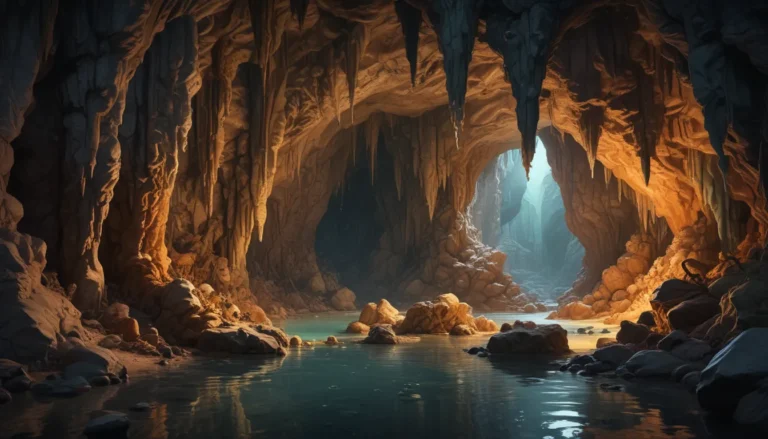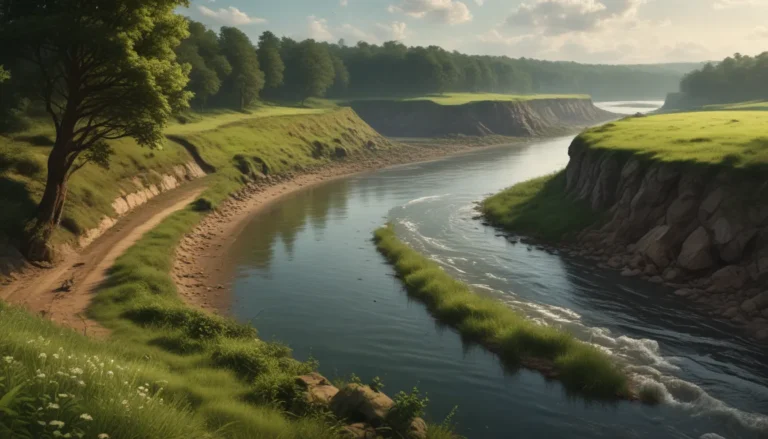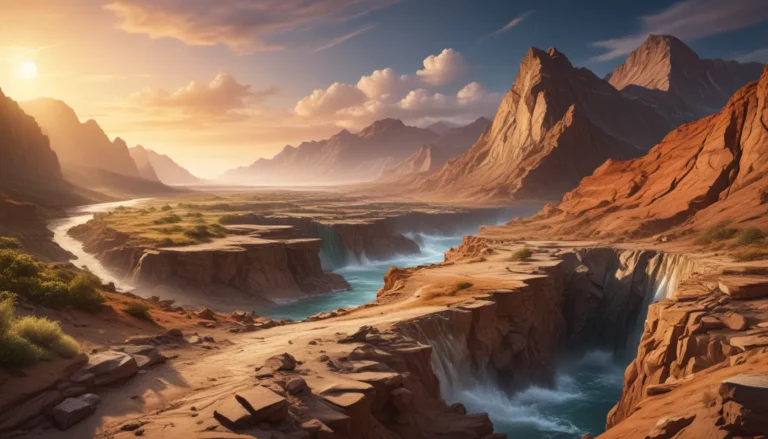A Note About Images: The images used in our articles are for illustration purposes only and may not exactly match the content. They are meant to engage readers, but the text should be relied upon for accurate information.
Welcome to the captivating world of river basins, where nature’s beauty and complexity merge to create intricate ecosystems that play a vital role in sustaining life on Earth. In this article, we will delve into 11 astonishing facts about river basins that will leave you in awe of their sheer magnitude and importance. From their diverse ecosystems to their cultural significance, river basins are true marvels worth exploring.
Key Takeaways:
- River basins are essential for our planet’s water cycle, supporting diverse ecosystems and human populations across continents.
- River basins face threats from human activities and climate change, emphasizing the need to protect and conserve these natural systems.
The Lifeblood of Our Planet: Understanding River Basins
Spanning Across Continents: River basins are crucial for maintaining the Earth’s water cycle by acting as a collection point for rainwater that flows into rivers, lakes, and eventually the ocean. They are the lifelines that sustain life on our planet.
Hundreds of River Basins: From the Amazon Basin in South America to the Congo Basin in Africa, and the Mississippi River Basin in North America, there are numerous river basins worldwide that support rich ecosystems and human populations.
Incredible Biodiversity: The fertile lands of river basins provide habitats for a wide variety of flora and fauna, including rare and endangered species. These ecosystems are teeming with life, showcasing nature’s diversity.
Vital Resources and Challenges Faced by River Basins
Essential Resources for Humans: River basins play a crucial role in providing essential resources such as irrigation water, drinking water, transportation routes, and hydroelectric power generation. They are indispensable for supporting agriculture and economic activities.
Prone to Flooding: Due to their vast size and water collection, river basins are susceptible to seasonal flooding. While flooding poses challenges, it also replenishes nutrients in the soil and supports vegetation growth, highlighting the cycle of nature’s balance.
Interconnected Systems: River basins are not isolated entities but interconnected ecosystems where water from one basin can flow into another, influencing overall health and sustainability.
Conservation and Cultural Significance of River Basins
Facing Threats from Human Activities: Human actions like deforestation, pollution, and industrialization pose significant threats to river basins, disrupting the ecosystem’s delicate balance and endangering numerous species.
Cultural Significance: Throughout history, river basins have held cultural and spiritual importance for civilizations worldwide. They have inspired art, literature, and religious practices, reflecting their profound impact on human societies.
Transboundary Cooperation: Some river basins cross multiple countries, requiring cooperation and management efforts to ensure sustainable development and conservation across borders.
Climate Change’s Impact on River Basins and the Importance of Conservation
Influenced by Climate Change: River basins worldwide are experiencing the effects of climate change, including rising temperatures and altered rainfall patterns. These changes can lead to reduced water availability, altered ecosystems, and increased vulnerability to natural disasters.
Worth Protecting: Given their critical role in ecosystems and human well-being, it is paramount to protect and conserve river basins through sustainable management practices and conservation efforts to ensure their longevity and health.
Conclusion: Appreciating the Complexity and Vitality of River Basins
In conclusion, river basins are not just bodies of water; they are dynamic ecosystems that play a crucial role in maintaining our planet’s ecological balance. From their immense biodiversity to their cultural significance, river basins are natural wonders that deserve preservation and conservation efforts to safeguard their future.
FAQs About River Basins
-
What is a river basin? A river basin is a geographical area drained by a river and its tributaries, encompassing all land and water bodies contributing to the river system.
-
How do river basins form? River basins form through the erosion of land by water, creating interconnected waterways that make up a basin over time.
-
What role do river basins play in the environment? River basins regulate the water cycle, provide habitats for diverse species, and support human activities like agriculture and transportation.
-
How large can river basins be? River basins vary in size, from small to massive basins covering thousands of square kilometers, with the largest ones spanning millions of square kilometers.
-
Are river basins prone to flooding? Yes, river basins are susceptible to flooding during heavy rainfall or snowmelt, having both positive and negative effects on the ecosystem.
-
Can river basins be polluted? Unfortunately, yes. Human activities such as pollution and improper waste disposal can lead to pollution in river basins, affecting aquatic life and ecosystem health.
-
Are there famous river basins? Yes, there are famous river basins worldwide, including the Nile Basin, Mississippi River Basin, and Ganges-Brahmaputra Basin.
-
How can we protect and conserve river basins? By promoting sustainable practices like responsible water management, reducing pollution, preserving vegetation, and supporting habitat restoration and species conservation.
As we unravel the wonders of river basins, let’s embrace the beauty and significance of these remarkable ecosystems. Through conservation and appreciation, we can ensure the continued vitality of river basins for future generations to cherish and enjoy. Let’s celebrate the awe-inspiring beauty of river basins and the essential role they play in sustaining life on our planet.






